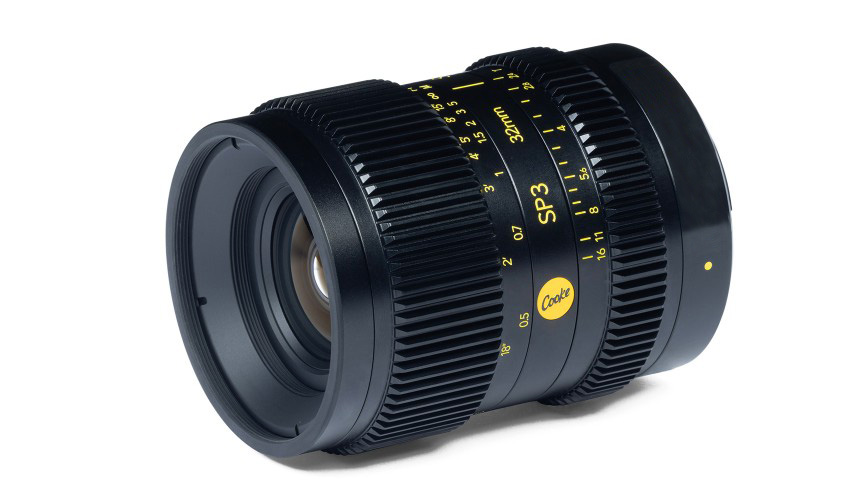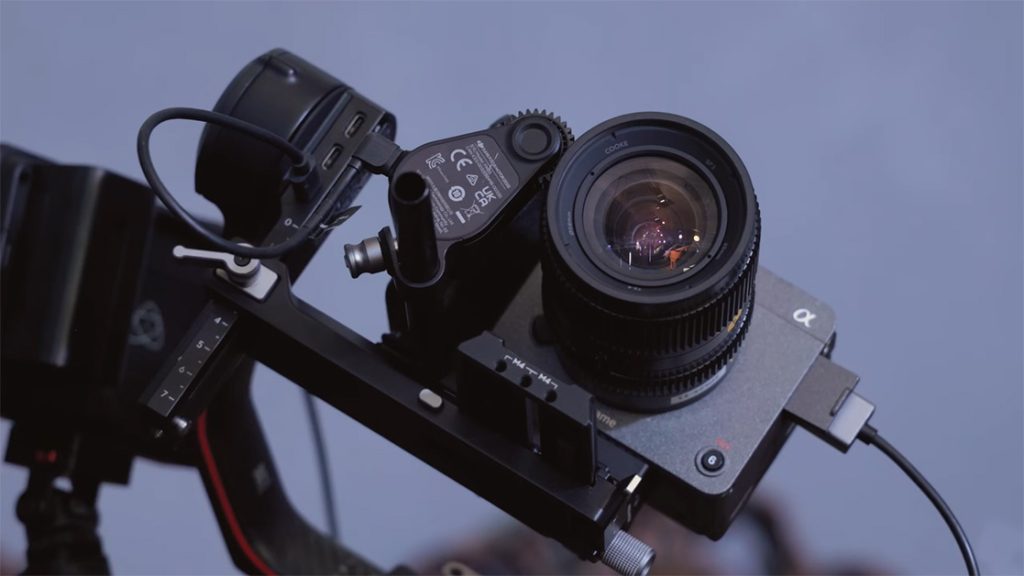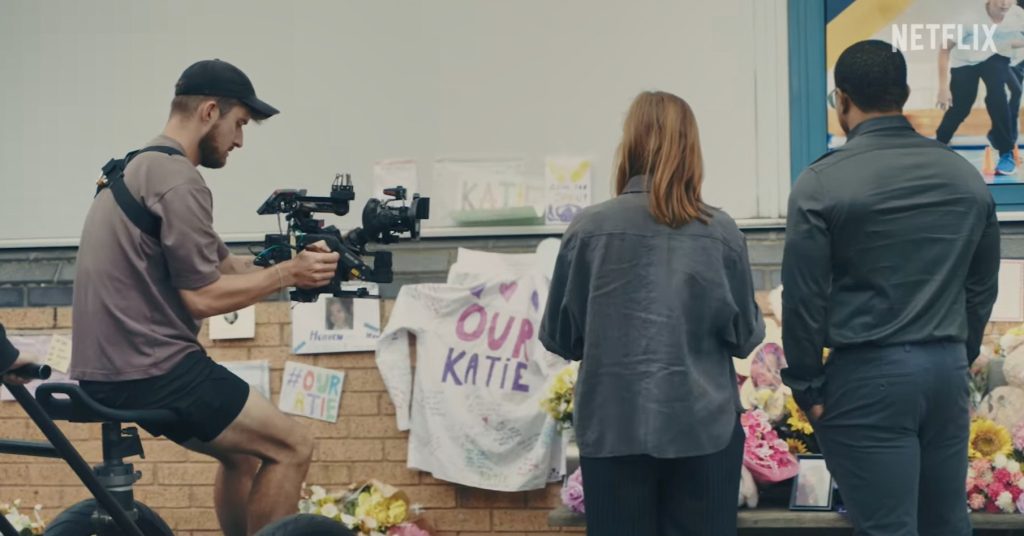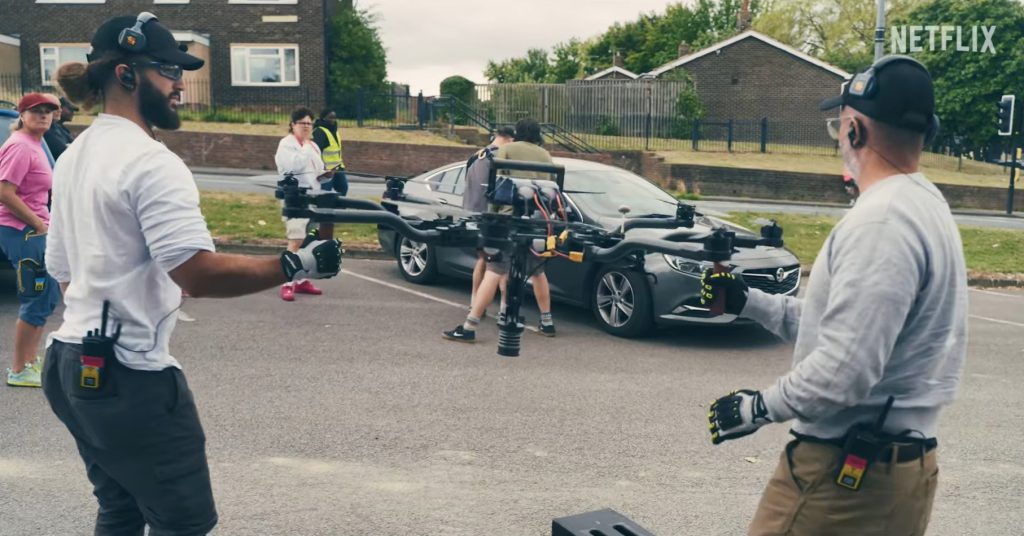The camera and lens work in the Netflix series Adolescence isn’t just a filmmaking achievement; it’s a testament to how far technology has come. Matthew Lewis used DJI Ronin 4D camera to shoot Adolescence and the lens was Cooke SP3.
Features of Cooke SP3 Lens

COOKE SP3 32mm T2.4 lens was used to shoot Adolescence. SP3 lenses are developed to elevate visual storytelling, capturing emotions and creating depth. Key features-
- The lens has a weight of 520 grams with a focal length of 32mm. The lightweight nature of the SP3s allowed for the use of a Variable ND filter, which is essential for shooting in blue skies and achieving depth of field.
- The 32mm lens offers better control, allowing for more precise adjustments. SP3 lenses come with an E-mount as standard. It has an interchangeable mount system.
- The contrast levels are low in 32mm. It provides excellent clarity, effectively minimising swirl or aberrations that could detract from image quality.
- The 32mm lens exhibits excellent sharpness in the centre of the image while showing a more creative and distorted rendering towards the edges, resembling the human eye. The distortion is minimal.
- These lenses boast advanced coatings designed to minimise flare and guarantee consistent colour across the entire set.
Choosing Cooke SP3 Lens

DJI Ronin 4D is compact, has the best stabilisation, shoots in 6K and 8K, and has LAR autofocus. When it comes to traditional cinema cameras, they are considering something like the mini LF on a Ronin 2 to see how that setup works. The Ronin 2 is a fantastic gimbal, but it definitely has its limitations, particularly when it comes to weight. These gimbals are quite heavy, which can be a challenge during extended shoots, especially if you’re aiming for that smooth, organic look we’re after. The Ronin 4D camera has limited lens options due to the gimbal’s payload, which is primarily compatible with smart lenses.

It’s interesting that you mentioned how this kind of camera feels more stable in terms of updates compared to other consumer brands like Lumix or Sony. That sense of security in your investment is an important factor, especially when you’re making a substantial financial commitment.
With certain setups, like using a consistent mount for lenses, it eliminates the typical complications of switching, allowing for smoother operation and greater flexibility on set. For instance, the ability to interchange lenses without affecting weight or balance is a game changer, especially when working with gimbals.
Without the Z axis engaged, you can load the gimbal with more weight, but the axis has to be operational for various shots. This limitation led to a limited selection of lens options, so using lightweight glass that would still deliver the cinematic quality. While the DJI lenses perform well, they were striving for something more polished and advanced, making it difficult for viewers to tell we were using a more compact camera setup.
That’s why they used the Cook SP3 lenses. It was pretty lucky timing, as they were also considering other options like the Zeiss Battis glass and some photography lenses from Sigma. Once they tried the SP3s, they immediately noticed a significant difference. The images captured by the sensor were much more vibrant compared to the DJI lenses.
Cooke SP3 32mm vs 25mm Lens

- The 25mm lens displays notable complexity in its imagery, while the 32mm lens shows excellent control and precision, producing clear and cohesive images.
- The 32mm look to have slightly lower contrast than the 25mm and it produces slight barrel distortion, especially with the wider lenses, and they produced stunning visuals. Whereas the 25mm shows pincushion distortion.
- The design of 32mm features a precisely defined edgewhich is complemented by a delicate infusion of color. Additionally, a soft glow enhances the overall aesthetic, creating a visually appealing effect that draws attention without overwhelming the senses.
Interchangeable Mount System

This system that allows users to switch between E-Mount, Canon RF, L-Mount, and Leica M-Mount systems. Each lens will come with an E-Mount pre-installed, and a replacement RF mount will be included in the box. L-Mount and M-Mount options will be available for separate purchase.
This versatility in swapping lens mounts makes the SP3S set a valuable investment for rental houses and camera operators. For rental houses, the ability to easily change lens mounts means they can invest in fewer sets of lenses while still accommodating clients using both cinema and mirrorless cameras. For camera operators, these lenses are effectively future-proof. Although the term “future-proof” is often overused, these lenses are designed with a timeless aesthetic. When combined with the option to swap lens mounts, it is unlikely that these lenses will become obsolete anytime soon.
The lighting during the shoot and the creative use of lamps, ceiling tiles, and sunlight in the set design were crucial. Therefore, selecting the right lens with flare was essential. Also, Cooke anamorphic lenses offer a perfect blend of ease of use and the anamorphic style. They enhance the cinematic experience by capturing the subtleties of human faces and skin tones for authentic visuals.
However, there are some challenges while using Cook SP3s, especially regarding exposure control since there’s no internal aperture or focus control with the SP3s.
How Did the Crew Took One Camera Shot?
Before diving into the tech behind it, let’s take a quick trip through the evolution of the one-shot. It started with Alfred Hitchcock’s Rope in 1948, one of the first films to look like it was done in a single take. Back then, they were limited by film reels, and Hitchcock hid the cuts by whipping past furniture or zooming into jackets. It wasn’t seamless, but it was revolutionary.
Then there’s Goodfellas, Scorsese’s famous Copacabana scene, a long unbroken shot taking us through the kitchen and into the club. It wasn’t just style; it was character. We feel Henry Hill’s world in real time. Of course, we can’t forget Children of Men. Alfonso Cuarón took it further with the car ambush scene shot in a rigged car with remote-operated cameras—the chaos felt real because it was real.

Many productions that claim to be single takes consist of multiple takes that are edited together in post-production. Cuts are concealed using different techniques. But in Adolescence, each episode was filmed in 10 continuous takes, with the best selected in post-production.
During rehearsals, the cast worked through choreography, allowing the DP to plan camera positions and crew movements throughout the take. The performances in Adolescence feel raw and uninterrupted because the story unfolds in real-time without cuts—no breaks, no filters, just pure continuous emotion. Members of the crew had to stay in shot and were even dressed in costume to blend in, as seen in the first episode, where some crew members wore police uniforms.
Things that separates Adolescence from a one take gimmick is the extensive planning: the blocking, the set design, the timing of extras, the lighting, the focus pullers—all the crew working together made it happen.
There were 320 teenagers playing school children in one episode. Imagine having the pressure of holding the camera, hoping you don’t drop it or bump into anyone! Sometimes they carried on despite mistakes. Other times, if something went wrong—like bumping the gimbal—they would have to abandon the whole shoot, which sounds so gruelling.

The fluid camera movements enhanced the storytelling and character dynamics. It really plays into the tension and the feeling of anxiety as the audience is pulled along with the characters’ journeys without any disruptive cuts. The continuous shot allows viewers to settle into the moment, observing the characters’ emotions unfold in real-time.
With the scale of Adolescence—set design, number of people, and the entire environment—it all feels real and tangible. You’re not just watching a show; you’re inside the show.
